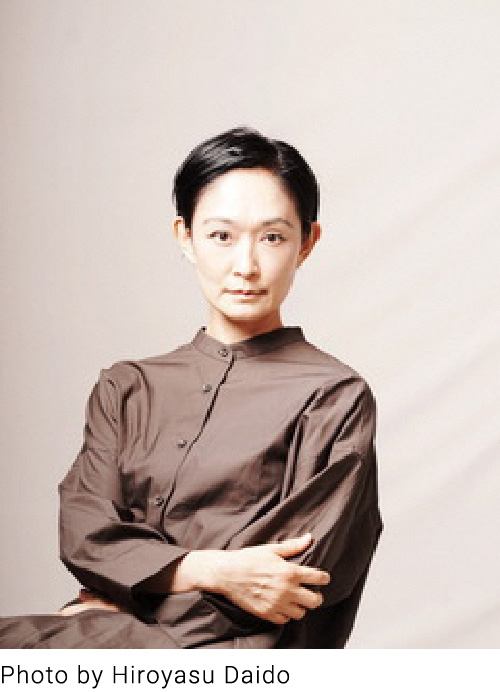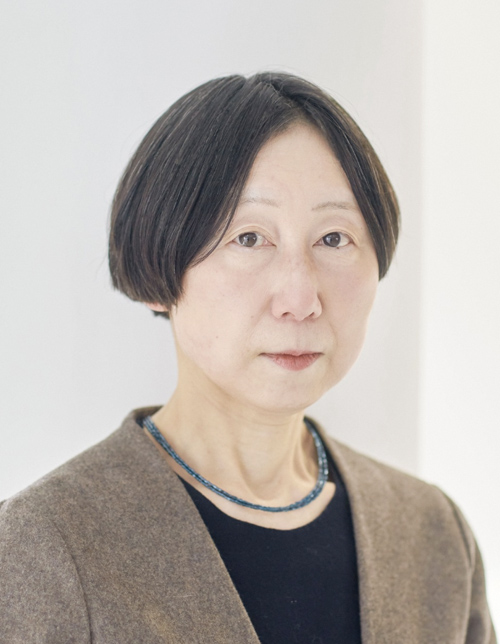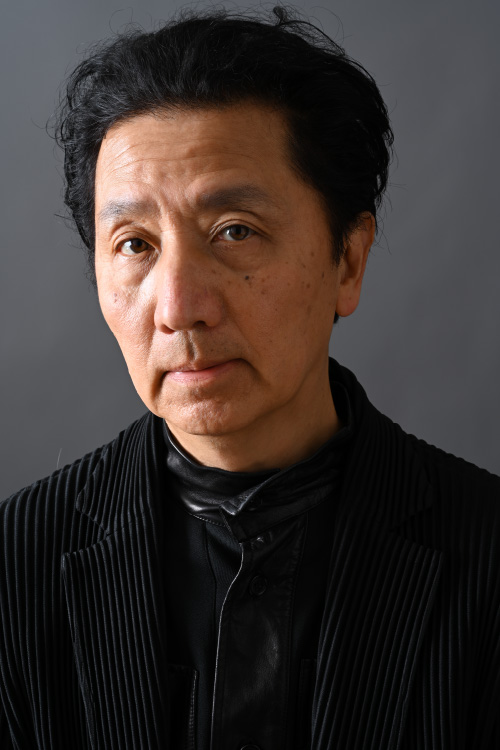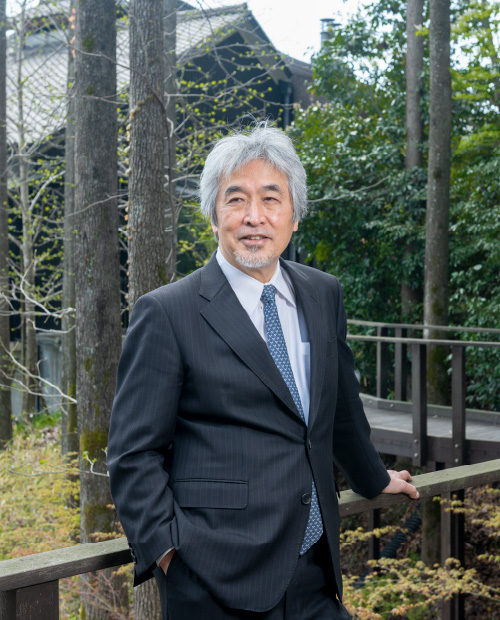Comments from First Round Judging
-

-
IRIE Keiichi Architect/Design Director
Artists’ perception of reality has changed greatly over the period from the invention of perspective up to the dismantlement of the structure of art 100 years ago and beyond. And today, information has grown larger than reality. Against this backdrop, I wonder whether anyone can answer the question: “Where is REALITY going?” Or perhaps there is no need to answer this question insofar as a passionate message of “REALITY” is engraved on an object, whether it be a human body, the environment, information or otherwise. My selection criteria were based on whether or not:
(1) The work represents the situation of the present era,
(2) It heralds the arrival of a new value, and
(3) It has anything to feed back to society and people.
I examined 574 entries in anticipation of finding something like unspoken words or undone deeds contained in them. The selection process was very difficult, and made me keenly aware of the stubbornness of the concept of art. Works that deviate too far from the concept or whose value is elusive are unlikely to earn high scores from judges. Anyway, the entries that passed the primary selection are all great works. I look forward to seeing how they will add to their splendor when embodied.
-

-
IWASAKI Hideo Artist and Researcher/Professor, Faculty of Science and Engineering, Waseda University, Director of metaPhorest
We received many groundbreaking proposals for ideas to be implemented and installed in a cube. First, I would like to thank all the artists for submitting inspiring proposals for the AAIC. While I am grateful for the opportunity to discover a broad range of possibilities of creation, it was difficult to select only a handful of winners from among more than 570 entries and reject most of them. Personally, I wanted to qualify about 50 entries for the secondary selection, if allowed. At the selection meeting, which I attended with brief comments on all the entries, we took our duty as judges seriously, but, regrettably, the selection was made mainly by voting, rather than through detailed discussion and consideration. Accordingly, I think some entries were rejected without us noticing their true value, and so I will prepare myself for the secondary selection. It is also a pity that there were some works that were appealing enough but had to be rejected because they did not comply with the requirements, such as those using organic matter and those designed to be exhibited outdoors. Overall, all the works that passed the primary selection are intriguing and I look forward to seeing how they appear when completed. When installed in cubes, all these objects will confront us as ambiguous beings, which are both real and unreal. I eagerly await the completion of works of art that allow us to share an experience that resonates emotionally with us beyond the scope of art in its general sense.
-

-
KITAMURA Akiko Dancer and Choreographer/Professor, Faculty of Arts, Shinshu University
Exposed to many restrictions and stress for more than two years, it has become a natural part of my life to ask myself “Where is the REALITY of dancing going?” It was during this time that the primary selection took place. As I went through the proposals, maquettes and videos, I experienced moments when my instinct was entangled with thought, which made me feel as if connecting directly with yet-to-be-seen works installed in a cube of my imagination. Concepts of works that twist, distort, or overturn our bodily sensations or generally-accepted order appeared to me as if they were floating in time and space while presenting infinite possibilities of “where REALITY goes.” To me, these works seem to have something in common with dancing, as both are going through a circulatory process of thought in one’s mind being expressed through bodily sensations, and then returning to the mind. Experience led by creative instinct causes change in bodily sensations, and connects us with thought, time and space, and material objects. I think such an experience will bring us new sensations in dancing. I can’t wait to see how embodied works will stir our sensations even more, or make us experience things beyond our imagination next April.
-

-
SHIKATA Yukiko Curator and Critic/President, International Association of Art Critics, Japanese Section
In this competition, entrants were required to submit works during the COVID-19 pandemic, in addition to tackling the challenge of creating works aligned with the concept of “cube.” Many of the proposals submitted, therefore, reflected the “REALITY” specific to the current era and “where REALITY goes.” As is usual with this open competition, we judged the entries without any knowledge of each entrant’s name, country, and gender, and it was a very interesting experience to imagine what the entrants were like while examining their works. The entries were mainly contemporary art works, including architectural and media art works, and encompassed general genres of art, such as painting, sculpture, and craftwork. At the same time, there were a number of performance proposals that do not appear to meet the conceptual framework of this competition. Many of the entries used as their motifs the rich nature and culture of Gifu, including pristine waters, stones, Mino washi (Japanese handmade paper), and Mino ware. What impressed me most was the sincerity of the artists as they faced the post-pandemic era and ongoing problems, whether domestic or foreign. The artists approached “REALITY” in diverse ways: through perceptual recognition or bodily expression; by looking back on the past; or by relativizing human-centrism. However, I saw in all these works the artists’ desire to re-connect with people, society, and nature. Especially, I highly evaluated those proposals that remained closely linked with objects that are hardly visible in our daily lives, such as memory and death, or that reflected the artists’ craving for relationships with the environment and ecosystems from a micro or macro perspective, as well as those designed to break through confusion by humorous and surreal expressions.
-

-
TERAUCHI Yoko Artist
What differentiates the AAIC from other open competitions is, among other things, the presence of a huge stand-alone cube. It is rare for artists to be given an opportunity to use a wooden cube of 4.8 (W) x 4.8 (D) x 3.6 (H) meters as part of their work in whatever manner they like. For this reason, I personally selected entries based on whether entrants were aware of the presence of a stand-alone cube in creating their works. Many of the entrants seemed to propose placing an object in the inner space of the cube, but we don’t need a stand-alone cube if the purpose is simply to place an object or situation in a specified space: such a purpose could be easily satisfied just by exhibiting the object in a museum gallery as we normally do. The AAIC requires each work to be exhibited inside an inner space of a cube that is set up in a museum gallery. Using such a double-structure space as an exhibition space involves much difficulty. There were a few entries that reflected the artists’ awareness of this difficulty. Though they did not pass the primary selection, I was impressed with how they tackled the “presence of a cube” in their own unique ways. It might be interesting to make “awareness of the presence of a cube” one of the requirements for entry.
-

-
MORIMURA Yasumasa Artist
I don’t like judging, because art and competition are, in essence, at different ends of the spectrum. Artistic value cannot be scored numerically. I even think it is wrong to have works of art compete for supremacy. But of course it is impossible to make all the entries winners, so, as a judge, I managed to select some works, while muttering to myself, “I don’t like judging.” After pondering how to select qualifying entries, I decided to adhere to one, somewhat gamble-like rule: to select entries that made me want to see more. Among design concepts submitted for the AAIC, there were proposals that seemed impossible to materialize, or that appeared to mock us. Such proposals stirred my interest and made me want to see more. I betted on the unpredictable possibility of these proposals. Let me reiterate: art is not something to be ranked. So what is art? Art is the process of struggling to find an answer to this question. I applaud all the entrants for their struggles.
-

-
YAMAGIWA Juichi Director-General, Research Institute for Humanity and Nature
Art is inherently not REALITY. Art is a narrative, which is different from the one told by language. While language cuts the world into divisions and gives meaning to them, art shakes the world of unconsciousness and transforms it. The two different narratives constitute parallel worlds and we are floating between these worlds. Art in the conventional style is connected with the real world in some way or other. However, the progress of ICT has severed the connection and expanded the realm of unreality. Given the ambiguity of the connection between art and REALITY, the theme of AAIC 2023 is meant to unleash art into the microcosm of CUBE. What shape can art take? While old technologies are constantly being replaced with new ones through innovations, art maintains something primitive in it, allowing us to perceive the path trodden by humanity as we explore deep into it. With this in mind, I looked at the entries and noticed that these artists are rapidly losing confidence in the real world. How can we perceive the future from their creations?

